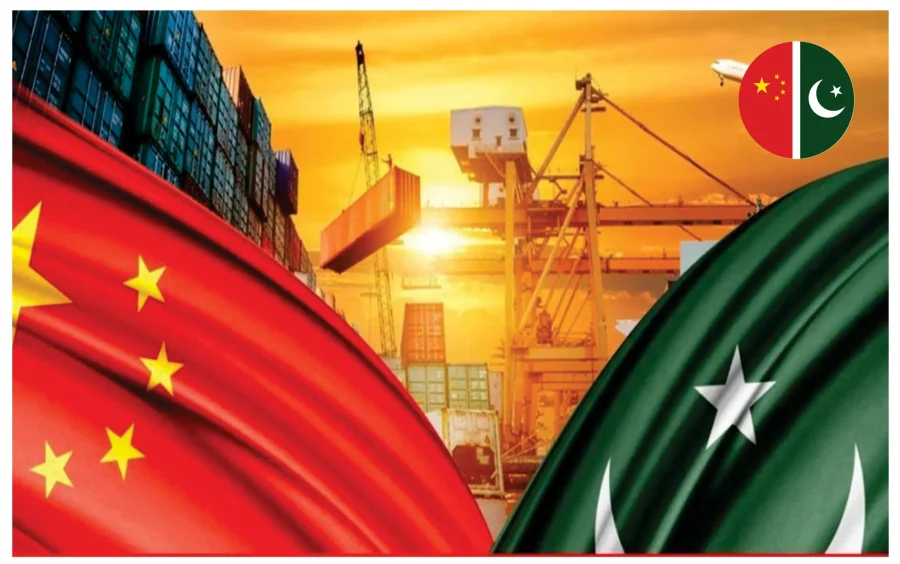In mid-August 2024, Pakistan celebrated a significant milestone in its ambitious collaboration with China through the China-Pakistan Economic Corridor (CPEC). The successful integration of the Suki Kinari Hydropower project’s first unit into the national grid marks a turning point in Pakistan’s energy sector. Set to be fully operational by year-end, this project promises to deliver approximately 3.2 billion units of clean electricity annually, powering over one million households. This advancement signifies a major leap in modernizing Pakistan’s energy infrastructure and reducing carbon emissions.
The benefits of the Suki Kinari project extend well beyond its immediate contribution to electricity supply. By replacing 1.3 million tonnes of coal with renewable energy, it is poised to cut 2.5 million tonnes of CO2 emissions annually. This shift aligns perfectly with Pakistan’s broader strategy to combat climate change and meet international environmental commitments. The project represents a significant stride towards reducing the country’s dependency on fossil fuels and addressing energy shortages that have hindered its economic and industrial growth.
Since its inception, CPEC has been transformative for Pakistan. The first phase, supported by a $25.4 billion investment from China, was pivotal in reshaping Pakistan’s infrastructure landscape. This phase resulted in approximately 155,000 jobs, 510 kilometers of new motorways and expressways, and over 8,200 megawatts of additional power capacity. The focus was on developing energy and transport infrastructure, laying a strong foundation for Pakistan’s economic growth and integration into the global economy.
With the advent of CPEC’s second phase, or “CPEC 2.0,” the focus is shifting from large-scale infrastructure projects to fostering business-to-business cooperation. This phase sets ambitious targets, including the creation of new sub-corridors focused on growth, innovation, and environmental sustainability. CPEC 2.0 aims to stimulate economic activity, enhance productivity and increase exports. The vision for this phase is to strengthen economic ties between China and Pakistan through innovation, green development and sustainable growth. By creating a more dynamic business environment, CPEC 2.0 seeks to unlock new opportunities for collaboration and economic advancement.
A testament to CPEC’s transformative potential is its role in enhancing regional connectivity and economic integration. The corridor has not only facilitated the flow of goods and investment between China and Pakistan but also positioned Pakistan as a pivotal player in the broader regional trade network. By linking key economic hubs and creating a network of trade routes, CPEC is fostering greater regional cooperation and opening new markets for Pakistani businesses. This enhanced connectivity is expected to drive economic diversification, boost local industries and attract further international investment. As CPEC continues to evolve, its impact on regional integration and economic stability will likely become even more pronounced, reinforcing its status as a cornerstone of Pakistan’s economic strategy and its partnership with China.
One of the most significant undertakings in CPEC 2.0 is the upgrade of the ML-1 railway track, linking Peshawar to Karachi. This project is crucial for enhancing Pakistan’s transportation infrastructure and stimulating economic growth nationwide. However, it has faced substantial delays, increasing costs and complicating its execution. To ensure success, Pakistan must address critical issues, including fostering a conducive business environment, reducing bureaucratic hurdles, and expediting investor facilitation.
The development of Special Economic Zones (SEZs) is crucial in this regard. These zones are designed to attract foreign investment, stimulate industrial growth, and generate employment. Their success depends on the government’s ability to eliminate investment barriers and provide a stable, predictable regulatory environment. Without significant improvements, the potential benefits of SEZs may remain unrealized, undermining the broader objectives of CPEC 2.0.
Security concerns have emerged as a major obstacle to CPEC’s progress. Recent terrorist attacks targeting Chinese workers have heightened fears, prompting President Xi Jinping to address these issues directly with Prime Minister Sharif. Liu Jianchao, head of the International Department of the Communist Party of China, publicly expressed concern over the deteriorating security situation in Pakistan, which is eroding the confidence of Chinese investors. This acknowledgment underscores the urgency for Pakistan to enhance security measures to ensure the safety of foreign investors and restore confidence.
Improving security is not just about protecting assets; it’s about creating an environment where investors feel secure and valued. Liu’s emphasis on political stability and a “CPEC-friendly” media environment highlights the importance of maintaining a stable and secure business atmosphere. For CPEC to continue attracting investment and achieving its objectives, Pakistan must prioritize these security concerns and work to rebuild investor trust.
To navigate these challenges and unlock CPEC 2.0’s potential, Pakistan must address security issues, improve the business climate, and fulfill commitments to Chinese investors. This requires a concerted effort to enhance security, streamline regulatory processes, and honor agreements. Failure to adequately address these concerns risks turning CPEC from a beacon of economic opportunity into a mere mirage of potential.
While CPEC remains a crucial avenue for Pakistan’s economic revitalization, its future is fraught with challenges. Recent milestones, like the successful integration of the Suki Kinari Hydropower project, highlight the potential benefits of this collaboration. However, to fully capitalize on these opportunities, Pakistan must confront security issues, improve its business environment, and meet its commitments to Chinese investors. Only through decisive action and strategic management can Pakistan hope to transform CPEC from a grand vision into a tangible, long-term success.










